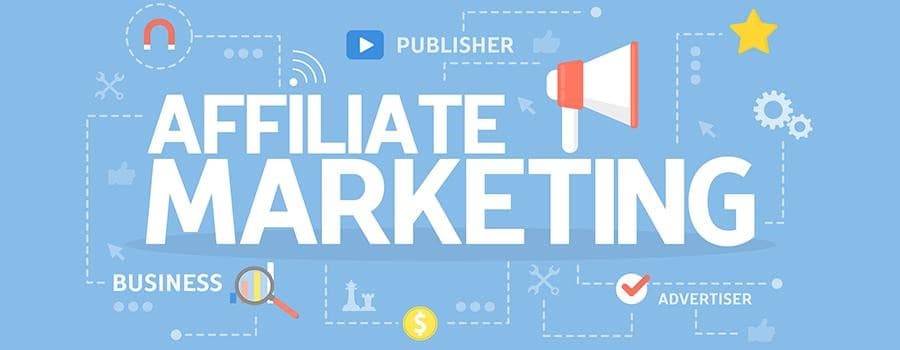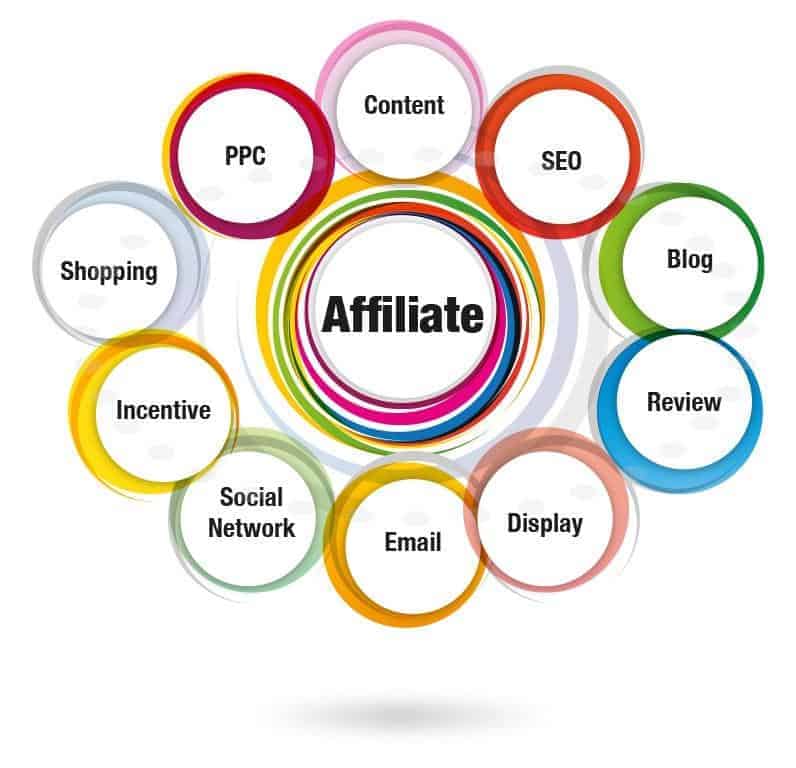Let us say you just started something in the huge world of marketing.
You are not really sure that you will start earning from your product or service right away, but you still have to make sure that you are getting some kind of revenue in order to survive.
If you are such a person and you need a little bit of earning while working on your own business, then affiliate marketing is the right choice for you.
The term affiliate means to “officially attach”.
Simply put, affiliate marketing is the process of earning a commission or small earning by promoting someone else’s product.
So while you are getting started on your products and services, you can promote someone else’s product in the side and earn some money out of it!
- You collaborate with another brand or business.
- You promote and persuade other people to buy the product of the brand that you are ‘affiliated’ with.
- You get a percentage of the profit that is earned from the sales of the product you helped sell.
Simple right?
Let me explain about affiliate marketing in more detail and with an example:
You are a barely started influencer on Instagram.
You have about ten thousand followers and you post makeup tutorials. You don’t really know if just posting this will be enough to get you revenue.
What you can do is approach a brand that is willing to do or already has an affiliate program.
They will give you a product to try and market – maybe a new lipstick that they released.
All you have to do is promote this new product of theirs to the 10,000 followers that you have.
Now, if any of the sales happen because of your marketing – people clicked on the link you shared, or ‘swiped up’ – then the brand will pay you money out of the profit they get because of that sale!
This is basically called revenue sharing.
But affiliate marketing is much more than just promotion of a product – it’s an entire system!
You may not be the only one a brand is affiliated with. You can also create your own affiliate program!
Now let us see what kind of system revolves around affiliate marketing.

There are three main parties in the system of affiliate marketing:
- Seller and product creators
- The advertiser or ‘affiliate’
- The consumer
Essentially, you as an affiliate marketer are the middle woman/man. You have to maintain a good relationship with the seller and the consumer. We will now get into each party’s role in affiliate marketing.
Seller and product creator:
Obviously, this person is the one who is selling the product – can be an individual, a large business, a vendor, retailer, product creator, etc.
they can sell a physical product like clothes or electronic devices, or they can sell services like software or tutorials.
The thing is, they don’t have to be directly or actively involved in the process of marketing, they just need to have something they want to sell.
The affiliate or the advertiser:
They are the main link between the seller and the buyer. This is where marketing happens.
The key is to persuade the consumer to buy the product. This persuasion can go two ways:
- The consumer feels a little confident about the product because it is being marketed through someone else – which works like word of mouth! A third party is vouching for the brand.
- The consumer knows that the affiliate is being paid to persuade people so they may think of it like they’re only doing it for money and the product is not authentic.
The affiliate usually has a very specific target audience and gives only that content that the audience likes.
The affiliate can write a blog on the product by the seller, make a video, and upload it on their YouTube channel or post and story it on their social media accounts.
They’re just trying to reach as many potential consumers who are interested in the product as possible.
Over time, the consumers that the affiliate caters to can become the audience for the affiliate itself and the affiliate is now a business or brand on its own.
The consumer:
They are the key to the locked box.
If they are not convinced, then there are no sales and if there are no sales then there is neither any profit nor any commission.
Sometimes the consumers are aware that the affiliate will receive a part of the profit (if the affiliate chooses to be transparent with the consumer). Other times the consumer may be completely oblivious to the fact that revenue sharing will happen.
This is the most common question that most consumers may have if the affiliate choses to be transparent with them: will they have to pay more than the retail price because the affiliate is getting a commission from the purchase?
The answer is… it’s a tricky one. But almost 96% of the time, the consumer will not have to pay extra at all as the affiliate’s share will be included in the retail price of the product or service.
The biggest affiliate program in the market:
AMAZON – when it comes to books, tools, toys, household items, even clothes, Amazon’s affiliate program is by far the largest. Anyone, and I mean anyone, can sign up and generate a custom affiliate link to any of their products. If someone buys through this link, then the person who generated the link gets a small commission.
How do affiliate marketers get paid?
- Pay per sale – the affiliate gets paid on each sale they make. So for every sale, they get paid part of the revenue earned.
- Pay per lead – this is not so much as getting the consumer to pay. All the affiliate has to do is convince the consumer to visit the seller’s website and complete the desired action (signing up or filling a form or taking a survey). This action does not necessarily have to be about buying the product. As long as the potential customer does a desired action, they get turned into leads. And the affiliate is paid for each lead she or he makes.
- Pay per click – this is an even simpler version – the affiliate should just make the consumer move from the affiliate website to the merchant’s website (linked in the affiliate website). Convincing the consumer to move out of the website and into the sellers will get the affiliate the revenue. Each click on the seller’s website is considered.

Look at the picture above. It shows the different branches of affiliate marketing or the different ‘channels’ that an affiliate can use. Here are the top 4 channels:
- Influencers – as mentioned earlier, influencers are the easiest and fastest way to get a large number of people to buy products or services. Influencers are mainly seen on social media channels which are a great place to persuade people to buy products.
- Bloggers – they are also another great way to get people to come to visit your website. Pay per lead and pay per click is essentially done through bloggers because they write about the product or brand that is paying them.
- Media websites – huge media sites (entertainment, news, or both) have affiliate links embedded in their pages and content. Because so many people consume this content, then it’s only feasible for sellers to launch affiliate programs with such massive websites.
- Email lists – email marketing is an old but for sure way of getting consumers to notice businesses or products. Affiliates can gather or make a list of emails over time and send out campaign mails or persuasive emails about products they are promoting. This includes newsletters from websites as well, where they earn commissions when the consumer clicks on the hyperlink in the newsletter.
Conclusion
Affiliate marketing is a great way to kick start generating revenue. You can either become a seller and call for affiliate marketers to promote your product, or you can become an affiliate marketer yourself and promote someone else’s product and gain commissions. The choice is yours!

